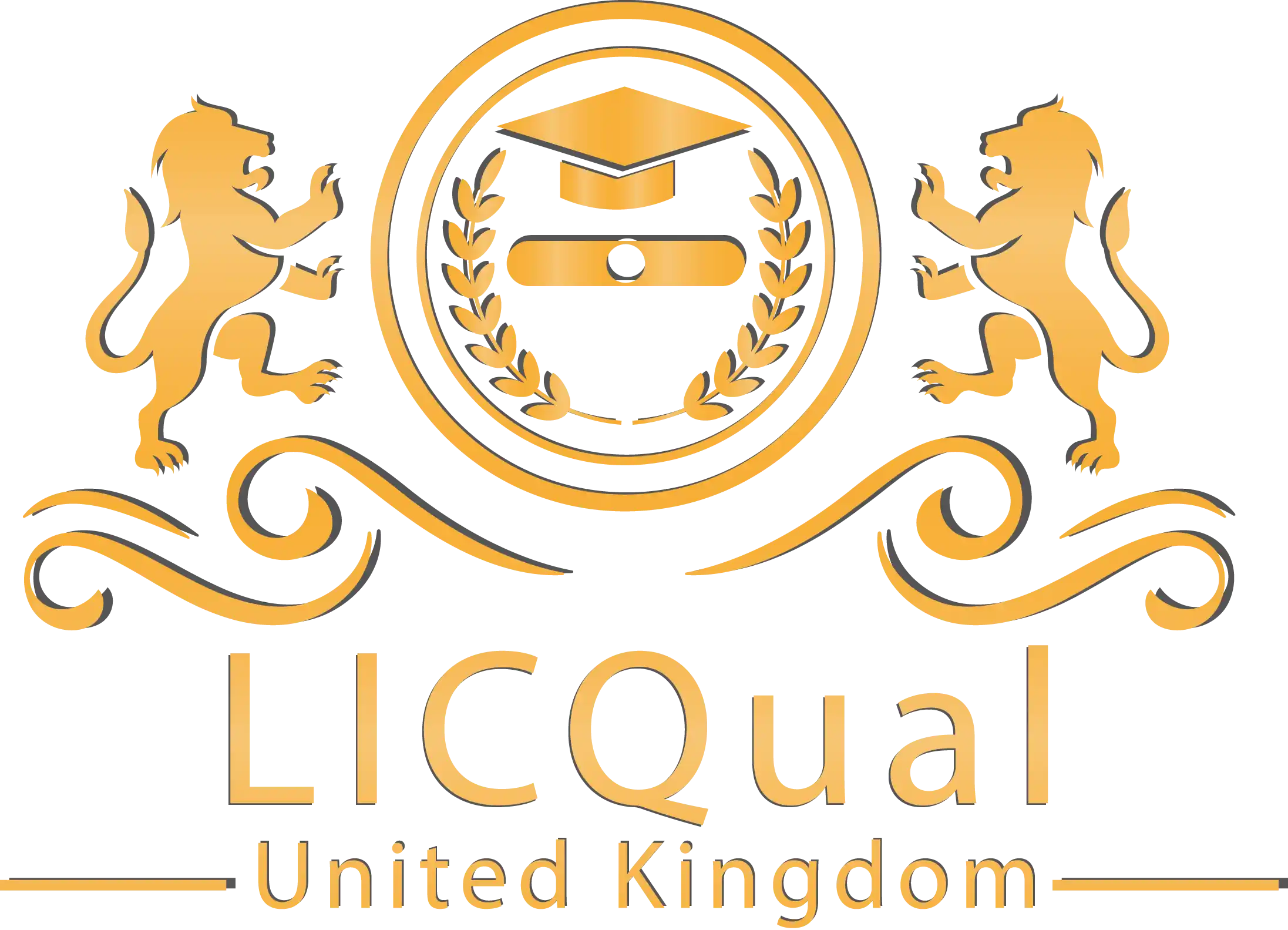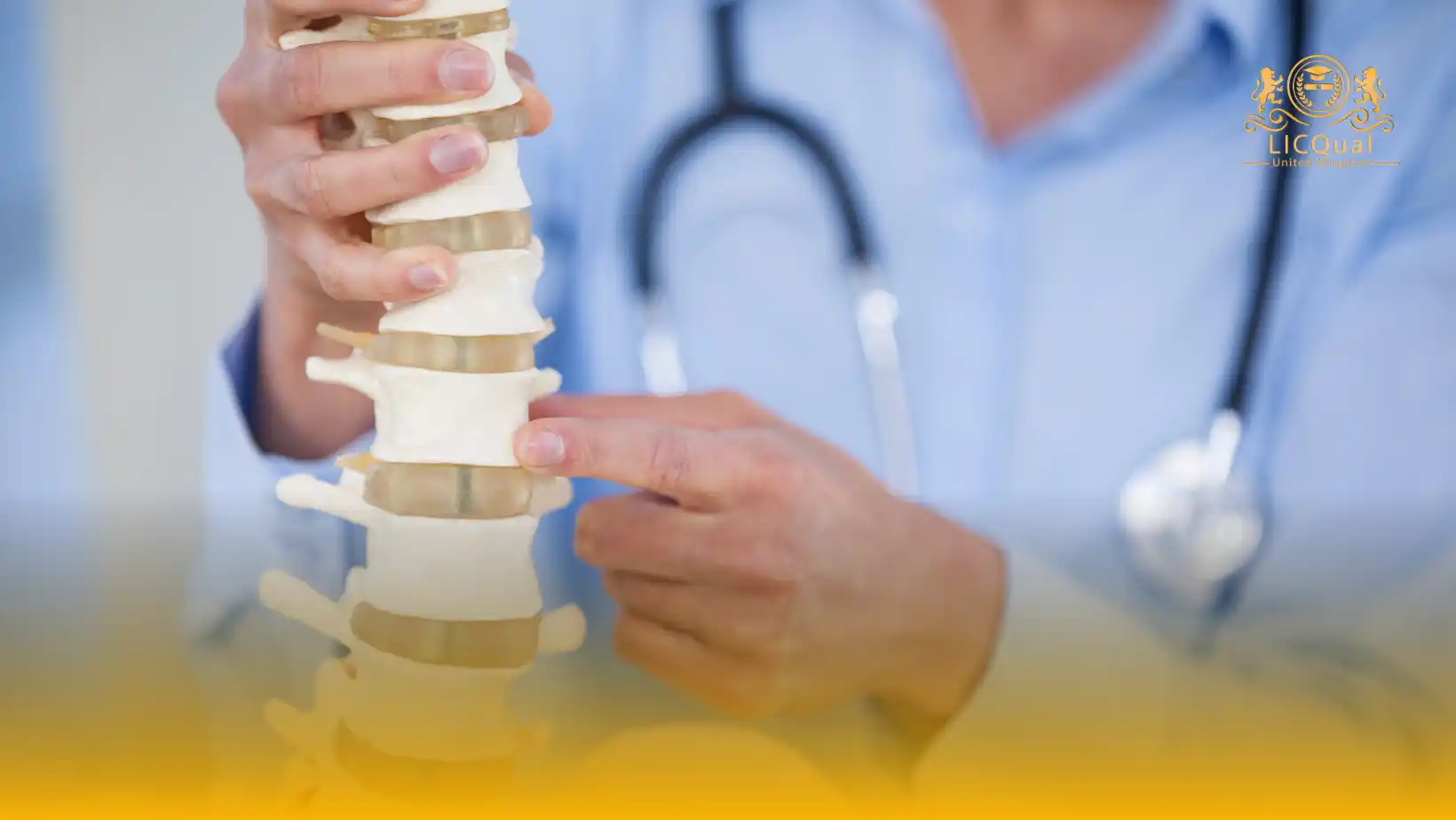The LICQual Level 6 Diploma in Orthopedics (Dip Ortho) is an advanced qualification designed for healthcare professionals seeking to specialise in orthopedics and musculoskeletal care. This course is aimed at learners who already have a clinical or healthcare background and wish to enhance their career prospects, expand their knowledge, and advance their Continuing Professional Development (CPD). It is not intended for fresh candidates but for professionals committed to excellence in orthopedic practice.
This diploma provides learners with comprehensive knowledge of musculoskeletal anatomy, orthopedic conditions, diagnostic techniques, and advanced treatment and rehabilitation strategies. Learners will gain both theoretical knowledge and practical skills, enabling them to assess, manage, and provide evidence-based care for complex orthopedic cases.
Centres delivering this qualification are required to maintain the highest standards of education and training. This includes employing competent and qualified staff and providing learners with access to all necessary resources, equipment, and learning materials to ensure successful learning outcomes. By adhering to these rigorous standards, centres guarantee that learners receive a high-quality educational experience, developing the expertise, confidence, and professional credibility needed to excel in orthopedic practice.
Completing the LICQual Level 6 Diploma in Orthopedics allows learners to demonstrate advanced professional competency, strengthen clinical skills, and achieve recognised credentials that reflect both dedication and expertise in musculoskeletal healthcare.
Course Overview
Qualification Title
LICQual Level 6 Diploma in Orthopedics (Dip Ortho)
Total Units
6
Total Credits
120
GLH
480
Qualification #
LICQ2200915
Qualification Specification
To enroll in the LICQual Level 6 Diploma in Cardiology (Dip C), applicants must meet the following criteria:
|
Qualification# |
Unit Title |
Credits |
GLH |
|---|---|---|---|
|
LICQ2200915-1 |
Advanced Musculoskeletal Anatomy and Physiology |
20 |
80 |
|
LICQ2200915-2 |
Orthopedic Pathophysiology |
20 |
80 |
|
LICQ2200915-3 |
Diagnostic Methods in Orthopedics |
20 |
80 |
|
LICQ2200915-4 |
Evidence-Based Management of Orthopedic Conditions |
20 |
80 |
|
LICQ2200915-5 |
Professional Practice, Ethics, and Clinical Governance |
20 |
80 |
|
LICQ2200915-6 |
Clinical Case Studies and Applied Orthopedic Practice |
20 |
80 |
By the end of this course, learners will be able to:
Unit 1: Advanced Musculoskeletal Anatomy and Physiology
- Demonstrate comprehensive knowledge of bone, joint, muscle, and connective tissue anatomy.
- Explain the biomechanics and functional physiology of the musculoskeletal system.
- Analyse cellular and molecular processes affecting musculoskeletal health and repair.
- Integrate anatomical knowledge with clinical orthopedic assessment and practice.
Unit 2: Orthopedic Pathophysiology
- Explain the pathophysiology of fractures, arthritis, osteoporosis, musculoskeletal injuries, and congenital deformities.
- Analyse mechanisms underlying degenerative and systemic musculoskeletal disorders.
- Evaluate risk factors affecting bone and joint integrity.
- Assess the impact of systemic diseases on musculoskeletal health and function.
Unit 3: Diagnostic Methods in Orthopedics
- Conduct comprehensive clinical assessments of orthopedic patients.
- Utilise diagnostic tools including X-rays, MRI, CT scans, and laboratory investigations effectively.
- Interpret imaging and test results to formulate evidence-based diagnoses.
- Develop differential diagnoses and create appropriate care plans for complex cases.
Unit 4: Evidence-Based Management of Orthopedic Conditions
- Apply advanced management strategies for acute and chronic musculoskeletal conditions.
- Implement surgical and non-surgical interventions, rehabilitation programmes, and physiotherapy strategies.
- Educate patients on lifestyle modifications, self-care, and injury prevention.
- Apply national and international clinical guidelines to ensure evidence-based orthopedic practice.
Unit 5: Professional Practice, Ethics, and Clinical Governance
- Apply legal and ethical principles in orthopedic and musculoskeletal practice.
- Maintain professional standards, patient safety, and confidentiality in all clinical interactions.
- Implement clinical governance, audit procedures, and maintain accurate documentation.
- Engage in Continuing Professional Development (CPD) to maintain competence and promote lifelong learning.
Unit 6: Clinical Case Studies and Applied Orthopedic Practice
- Analyse complex orthopedic case studies to enhance problem-solving and critical thinking skills.
- Apply theoretical knowledge to practical clinical scenarios safely and effectively.
- Demonstrate advanced clinical decision-making in patient management.
- Reflect on clinical outcomes and evaluate interventions to improve professional competence and patient care.
The LICQual Level 6 Diploma in Orthopedics (Dip Ortho) is designed for healthcare professionals who want to specialize in musculoskeletal health, trauma care, and orthopedic practice. This internationally recognized qualification is ideal for doctors, nurses, and practitioners seeking advanced knowledge in diagnosing, treating, and managing bone, joint, and muscle conditions. Whether you aim to progress in your current role, move into private practice, or strengthen your academic profile, this accredited orthopedics diploma provides the skills, credibility, and recognition to achieve your career goals.
1. Medical Doctors and Physicians
- Gain advanced expertise in orthopedic diagnosis and treatment
- Strengthen clinical decision-making with evidence-based approaches
- Enhance professional credibility with a Level 6 orthopedics diploma
- Expand opportunities in hospitals, clinics, and private practice
- Stay updated with the latest orthopedic guidelines and research
- Build a pathway toward postgraduate study or specialization
2. Nurses and Advanced Nurse Practitioners
- Develop specialized skills in orthopedic care and patient management
- Improve confidence in handling musculoskeletal and trauma cases
- Earn an accredited orthopedics diploma recognized internationally
- Support multidisciplinary teams with advanced orthopedic knowledge
- Increase career opportunities in orthopedic units and rehabilitation centers
- Deliver better patient outcomes through structured training
3. Primary Care and Community Healthcare Professionals
- Identify and manage musculoskeletal conditions at an early stage
- Provide accurate referrals and improve patient care pathways
- Strengthen practice with orthopedics-focused clinical training
- Add value to community healthcare services with specialization
- Improve patient trust and satisfaction with advanced expertise
- Enhance career progression in primary care settings
4. International Medical Graduates
- Obtain a qualification recognized in the UK, Middle East, and Asia
- Strengthen professional profiles for global healthcare careers
- Meet international accreditation and healthcare standards
- Gain credibility for advanced clinical roles abroad
- Access flexible online study while working internationally
- Build a competitive edge in global healthcare markets
5. Professionals Seeking Private Practice Opportunities
- Acquire specialized orthopedic skills for independent practice
- Increase patient demand with accredited qualifications
- Offer advanced orthopedic care services in private clinics
- Build a reputation as a trusted orthopedic practitioner
- Expand earning potential through specialized expertise
- Position yourself as a leader in musculoskeletal healthcare
6. Academic and Research Professionals
- Strengthen academic credentials with a Level 6 orthopedics diploma
- Contribute to orthopedic research and publications
- Gain structured knowledge aligned with global standards
- Support teaching roles in medical and healthcare education
- Enhance credibility in academic and professional networks
- Build a pathway toward higher-level qualifications and research
7. Career Changers within Healthcare
- Transition into orthopedics from other medical specialties
- Gain structured training to build new expertise in musculoskeletal care
- Access flexible study options while maintaining current roles
- Earn a qualification that supports career mobility
- Open doors to new opportunities in orthopedic medicine
- Build confidence in delivering patient-centered orthopedic care
To deliver the LICQual Level 6 Diploma in Orthopedics effectively and ensure high-quality learner outcomes, centres must meet the following requirements:
- Qualified and Experienced Staff: Centres must employ competent and certified instructors with professional experience in orthopedics, musculoskeletal care, and advanced clinical practice.
- Training Facilities: Centres should provide well-equipped classrooms and clinical practice areas suitable for both theoretical instruction and practical demonstrations.
- Access to Clinical Equipment and Learning Resources: Learners must have access to all necessary diagnostic tools, orthopedic equipment, and reference materials to complete practical and assessment components successfully.
- Health and Safety Compliance: Centres must adhere to current health, safety, and hygiene regulations, ensuring a safe environment for learners and staff.
- Assessment and Learning Support: Centres must provide comprehensive learning materials, assessment tools, and guidance, supporting learners in achieving competence and completing the qualification successfully.
- Continuing Professional Development (CPD) Support: Centres should facilitate learners’ ongoing professional growth by providing CPD opportunities aligned with best practices in orthopedic care.
- Quality Assurance and Monitoring: Centres must maintain robust quality assurance systems to monitor training delivery, learner progress, and overall programme effectiveness.
Meeting these centre requirements ensures learners receive high-quality education, hands-on experience, and professional support, preparing them to excel in orthopedic practice and achieve recognised professional qualifications
Assessment and Verification
All units within this qualification are subject to internal assessment by the approved centre and external verification by LICQual. The qualification follows a criterion-referenced assessment approach, ensuring that learners meet all specified learning outcomes.
To achieve a ‘Pass’ in any unit, learners must provide valid, sufficient, and authentic evidence demonstrating their attainment of all learning outcomes and compliance with the prescribed assessment criteria. The Assessor is responsible for evaluating the evidence and determining whether the learner has successfully met the required standards.
Assessors must maintain a clear and comprehensive audit trail, documenting the basis for their assessment decisions to ensure transparency, consistency, and compliance with quality assurance requirements.







